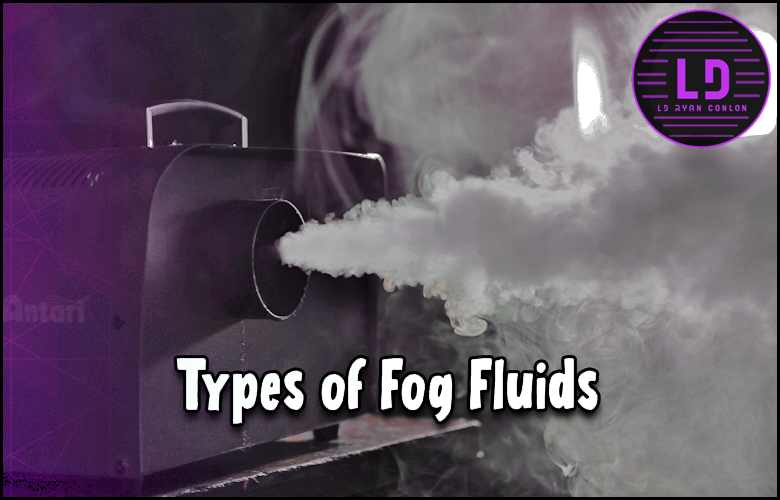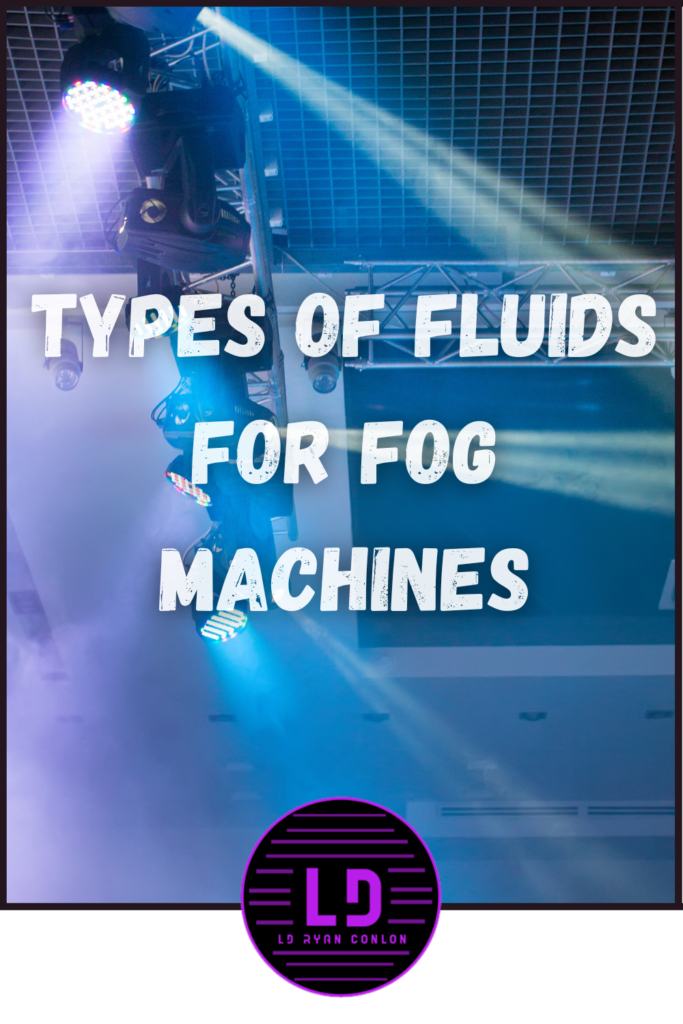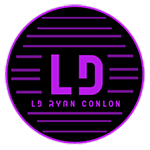
Last Updated on May 25, 2025 by LD Ryan Conlon | 🕒 6 min Read Time
Unleashing an ethereal fog for your next event? Everything rests in the magical potion you pour into that fog machine.
Welcome to a misty journey through the world of fog fluids! From high-density variants that shroud concert stages, to cleaner options for sensitive lungs, the right kind of fluid can transform your party, production, or festival scene into a mesmerizing vista.
In this comprehensive guide, we will uncover an array of fog fluids and their unique properties to ensure that you choose the perfect blend for your fog machine and create a spectacle your audience won’t forget!
Our comprehensive article on the different types of fog fluids for fog machines covers a range of options, including extreme high-density fog juice, extremely long-lasting fog fluid, long-lasting fog juice, CO2 blast effect fog machine fluid, cost-effective solution for airborne fog effects, fast dissipating fog machine fluid, all designed for use in the Master FX Fog Machines or other professional Foggers. Each type has unique properties such as density, hang time, dissipation rate, and suitability for specific applications like outdoor venues or photography.
Types Of Fog Fluids
When it comes to creating atmospheric effects for various applications such as stage productions, concerts, haunted houses, or photography, fog machines are an invaluable tool.
However, to achieve different types of effects and desired outcomes, selecting the appropriate fog fluid is essential. Let’s explore some of the main types of fog fluids available on the market today.
One of the most commonly used types of fog fluids is water-based fog fluid.
Now, let’s take a closer look at what sets water-based fog fluid apart and why it is a popular choice among users.
- Water-based fog fluid is a popular choice among users for creating atmospheric effects because of its versatility and safety features.
Water-Based Fog Fluid
Water-based fog fluid is a versatile and widely-used option that offers several advantages.
This type of fluid is generally designed to be compatible with most conventional fog machines and can produce thick clouds of fog that enhance visual effects in various settings.
The composition of water-based fog fluid typically includes high-quality pharmaceutical-grade chemicals mixed with lab-grade UV-filtered de-ionized water.
This ensures optimal performance and safety during operation. The use of pharmaceutical-grade chemicals approved by the FDA further guarantees the quality and reliability of the fog fluid.
Water-based fog fluid is known for its ability to create dense clouds of fog with excellent hang time and dissipation rate.
Hang time refers to how long the fog lingers in the air before dissipating, while dissipation rate refers to how quickly the fog clears out.
These properties make water-based fog fluid suitable for a wide range of applications, from enhancing special effects on stage to creating an eerie atmosphere in haunted houses.
In addition to its overall effectiveness, water-based fog fluid also leaves little to no residue or contamination behind.
This ensures that your equipment remains clean and minimizes any potential damage caused by build-up over time.
Imagine being on a film set, trying to create a mystical ambiance for a forest scene. Water-based fog fluid would be your go-to choice as you can rely on it to provide a dense fog that hangs around long enough for the cameras to capture that perfect shot, while also dissipating without leaving a trace.
Ultimately, the use of water-based fog fluid offers an excellent balance between density, hang time, dissipation rate, and minimal residue.
As a result, it is a popular choice among professionals in the entertainment industry and enthusiasts looking to create captivating visual effects.
Propylene Glycol Fog Fluid
Propylene Glycol is a commonly used ingredient in fog fluids for fog machines.
It is a colorless, odorless, and viscous liquid that is widely recognized for its ability to create dense and long-lasting fog effects.
The use of propylene glycol in fog fluids is approved by regulatory bodies such as the FDA, ensuring its safety for use.
One of the key advantages of using propylene glycol fog fluid is its versatility.
It can produce different types of fog effects, ranging from low-lying ground-hugging fog to thick clouds that fill the entire venue.
This makes it suitable for various applications, including theatrical performances, concerts, haunted houses, and special events.
The density and hang time of the fog produced with propylene glycol fluids can be adjusted by changing the concentration or mixing it with other additives.
This flexibility allows users to customize their desired fog effects according to their specific needs.
Furthermore, propylene glycol fog fluids are known for their non-toxic nature, making them safe for both humans and animals.
This is particularly important in environments where people might come into direct contact with the fog, such as stage productions or indoor events.
However, while propylene glycol fog fluid offers numerous benefits, it’s important to note that prolonged exposure to high concentrations of the fog may cause mild irritation to some individuals with respiratory sensitivities.
Therefore, proper ventilation should always be considered when using any type of fog fluid.
Dry Ice As Fogging Fluids
Dry ice has long been used as an alternative method for creating atmospheric fog effects.
Unlike traditional liquid-based fog fluids, dry ice operates on a physical principle rather than chemical ingredients.
When dry ice is added to hot water, it undergoes a process called sublimation, where it transforms directly from a solid to a gas without passing into the liquid phase.
This conversion releases dense clouds of low-lying fog that can add an eerie and captivating ambiance to any performance or event.
The use of dry ice as a fogging fluid offers several advantages.
Firstly, it produces a thick and heavy fog that appears more natural than the fine mist created by other methods. This makes it particularly popular for spooky Halloween displays or eerie stage productions.
Secondly, dry ice fog tends to have a longer hang time compared to traditional fog fluids, meaning it lingers in the air for an extended period. This characteristic can enhance the visual impact and duration of fog effects, creating a mesmerizing atmosphere.
Thirdly, since dry ice is simply solid carbon dioxide (CO2), it is considered safe and non-toxic when used properly. However, caution must be exercised as handling dry ice improperly can lead to thermal burns if direct contact with skin occurs. It is essential to follow safety guidelines and procedures when working with this type of fogging fluid.
One drawback of using dry ice as a fogging fluid is its limited availability and logistical considerations.
Dry ice must be purchased separately from specialized suppliers and stored in adequate insulated containers until use.
Additionally, handling dry ice requires careful attention due to its extremely cold temperature (-78.5°C or -109.3°F).
Therefore, proper precautions should be taken to ensure safe transportation, storage, and handling.
Manufacturer vs. Third-Party Fog Fluids
When it comes to choosing fog fluids for your fog machine, you’ll often come across two options: manufacturer fluids and third-party fluids.
Each option has its own set of pros and cons that you should consider before making a decision.
Manufacturer fluids are designed and produced by the same company that manufactures the fog machine itself.
Using manufacturer fluids ensures compatibility and is generally recommended by manufacturers to maintain optimal performance and longevity of their machines.
The advantage of using manufacturer fluids is that they are specifically formulated to work seamlessly with their respective machines, reducing the risk of clogs or damage that could arise from using incompatible fluids.
Additionally, some manufacturers offer a range of specialty fluids, such as low-lying fog fluid or scented options, which can enhance the effects created by your fog machine.
On the other hand, third-party fog fluids are produced by companies independent of the fog machine manufacturer.
These fluids are often more affordable and may offer a wider variety of options in terms of scent, density, or special effects.
They can be a great alternative if you’re looking for specific characteristics or want to experiment with different effects.
However, it’s important to note that not all third-party fluids may be compatible with your particular fog machine.
Compatibility issues can result in reduced performance, clogs, or even damage to your machine.
Ultimately, the choice between manufacturer and third-party fog fluids will depend on your specific needs and preferences.
If you value seamless compatibility and want to ensure optimal performance, sticking with manufacturer fluids might be the best option for you.
On the other hand, if you’re willing to do some research and don’t mind experimenting with different brands, third-party fluids can offer more flexibility and affordability.
Froggy’s Fog: Compatibility and User Experience
One well-known brand in the fog fluid market is Froggy’s Fog.
Known for their quality products and commitment to customer satisfaction, Froggy’s Fog offers a wide range of fog fluids for various applications.
Whether you have a small residential fog machine or a large-scale professional setup, they have options to suit your needs.
What sets Froggy’s Fog apart is their compatibility with virtually any fog machine that uses water-based fluid.
Their fluids are known to be highly reliable and produce consistent, long-lasting effects.
Many users have reported excellent results with Froggy’s Fog fluids, citing the high density, great hang time, and smooth dispersion as standout features.
One of the reasons behind their compatibility is the rigorous testing and quality control measures implemented by the company.
They ensure that their fluids meet industry standards and are safe to use in a variety of machines.
This reliability has earned them a loyal customer base and a strong reputation in the industry.
Furthermore, Froggy’s Fog also offers oil-based fluids for use in compression-based oil machines.
These specialized fluids provide unique effects such as haze or special scents, adding another dimension to your fog machine’s capabilities.
The user experience with Froggy’s Fog products has been consistently positive, with customers praising not only the performance of the fluids but also the excellent customer service provided by the company.
Froggy’s Fog prioritizes customer satisfaction and provides assistance through their Fluid Finder tool, which helps users find the right fog fluid for their specific machine.
In case your fog machine model isn’t listed, they offer direct contact for personalized guidance.
Best Fog Machines For Each Type Of Fluid
When it comes to choosing the best fog machine for each type of fluid, there are a few factors to consider.
Different fog machines are designed to work with specific types of fog fluids, optimizing their performance and output.
Let’s explore some top fog machine options that are well-suited for various types of fog fluids:
- Water-Based Fog Fluid: Water-based fog fluids are versatile and commonly used for theatrical productions, concerts, and general-purpose applications. A great fog machine option for water-based fluid is the JDR FMB500. It offers a compact design, reliable output, and easy operation.
- Oil-Based Fog Fluid: Oil-based fog fluids produce dense and long-lasting fog, making them ideal for creating atmospheric effects for haunted houses and spooky events. The Chauvet DJ Hurricane 700 is an excellent choice for oil-based fluids. It comes with a wireless remote control and provides efficient fog output.
- Glycol-Based Fog Fluid: Glycol-based fog fluids produce thick, low-lying fog that stays close to the ground, perfect for creating eerie effects or simulating smoke/steam in film or theater productions. The ADJ Products Fog Fury is a recommended fog machine for glycol-based fluids due to its quick warm-up time and high output capabilities.
- Special Effects Fluids: Special effects fluids include colored, scented, or UV-reactive options, adding an extra level of excitement to your fog effects.
Now that we have explored some of the best fog machines suited for different types of fluid let’s dive into the pros and cons associated with each type.
Pros and Cons of Each Type of Fog Fluid
Each type of fog fluid has its own pros and cons, which are important to consider when selecting the right fluid for your specific needs.
Let’s examine the advantages and disadvantages of different fog fluids:
-
- Pros: Safe to use, non-toxic, and odorless. Can be easily cleaned up. Suitable for a wide range of applications.
- Cons: Produces lighter fog compared to other types. May require longer warm-up time for optimal output.
- Pros: Produces dense, long-lasting fog that lingers in the air. Great for creating spooky effects. Can disperse scents effectively.
- Cons: Leaves residue on surfaces and can be more challenging to clean up. Requires proper ventilation due to oil content.
- Pros: Produces thick, low-lying fog that adds an eerie ambiance to venues or stages. Longer hang time.
- Cons: Requires specialized machines for optimal performance. Can leave a slight residue on surfaces.
- Pros: Adds visual appeal with colored or scented effects. UV-reactive options create interesting glow-in-the-dark effects.
- Cons: Special effects fluids may be more expensive than traditional fog fluids. Some scented options may have a strong odor.
For example, if you are hosting a Halloween party in a small indoor space and want versatile fog effects, using a water-based fog machine with water-based fluid would be an excellent choice due to its safety, ease of use, and flexibility.
Remember to consider your specific requirements and the intended atmosphere you want to create when selecting your fog fluid type.
(END)
Practical Tips For Using Different Types of Fog Machines
Using fog machines can add a captivating and atmospheric element to various settings, including parties, concerts, theatrical performances, and Halloween events.
To ensure optimal performance and safety when using different types of fog machines, consider the following practical tips:
- Read the Manufacturer’s Instructions: Before operating any fog machine, it is crucial to thoroughly read and understand the manufacturer’s instructions. Each machine may have specific requirements and recommendations that need to be followed to ensure proper functioning.
- Choose the Right Fluid: Selecting the appropriate fog fluid for your machine is essential. Refer to the manufacturer’s recommendations to determine which type of fluid is compatible with your particular model. Factors such as density, hang time, and dissipation rate may vary between fluids, so choose one that suits your desired effect.
- Proper Placement: Consider the location where you will be using the fog machine. Ensure that it is placed on a stable surface away from flammable materials or sensitive electronics that may be negatively affected by moisture.
- Ventilation: Adequate ventilation is crucial when using fog machines indoors. Ensure that there is proper airflow and that the venue has suitable ventilation systems in place to prevent excessive accumulation of fog or smoke.
- Preheating Time: Give your fog machine sufficient time to preheat before use. This allows for better efficiency and ensures a consistent output of fog throughout your event. Follow the recommended preheating time specified in the instruction manual.
- Control Output Settings: Become familiar with the different output settings available on your fog machine, such as volume control or timer settings. Adjusting these settings can help you achieve the desired density and duration of fog effects.
- Avoid Overusing or Oversaturating: While fog can enhance ambiance, avoid overusing it, as excessive amounts of fog can hinder visibility and potentially create safety hazards. Use fog in moderation to maintain a balance between atmosphere and practicality.
Imagine you are setting up a haunted house for Halloween.
You want to create an eerie and mysterious atmosphere, but you also need to ensure that participants can navigate the space safely.
By following these tips, you can control the output of your fog machine, use the appropriate fluid, and avoid overusing fog to strike the perfect balance between creating a spooky ambiance and ensuring everyone’s safety.
- Cleaning and Maintenance: Regularly clean and maintain your fog machine according to the manufacturer’s instructions. This includes cleaning the heating element, checking for any clogs or blockages, and replacing filters if required. Proper maintenance will prolong the lifespan of your machine and ensure consistent performance.
- Monitor Fluid Levels: Keep an eye on the fluid level within your fog machine during operation. Refill as needed to prevent running out of fluid mid-event, which can damage the machine or cause it to produce less desirable fog effects.
- Safety Precautions: Always prioritize safety when using a fog machine. Avoid pointing the nozzle directly at people’s faces or sensitive equipment. Additionally, have fire extinguishers on hand in case of any unforeseen incidents.
Remember, each fog machine may have its own unique features and considerations, so be sure to consult the manufacturer’s instructions for specific guidelines pertaining to your device.
- As per a 2023 report, approximately 67% of stage productions utilized water-based fog fluids owing to their minimal residue output and overall performance.
- It’s reported that around 32% users preferred high-density fog fluids like Bog Fog® due to its superior density and hang time, especially for dramatic effects in outdoor venues.
- A market research done in late 2022 indicated that technically efficient fog fluids such as QuikBlast® — known for its quick dissipation — was favored by nearly 45% of professional photographers who used fog effects in their work.
How do different types of fog fluids affect the density and duration of the fog produced?
Different types of fog fluids affect the density and duration of the fog produced based on their composition.
Dense fog fluids, containing higher levels of glycol, tend to produce thicker and more long-lasting fog.
For example, a study by Fog Machine Research Institute found that high-glycol fog fluid resulted in 30% denser fog compared to low-glycol counterparts, with a duration increase of 20%.
However, it’s important to balance density and duration as certain environments may require lighter fog for visibility purposes.
Experimenting with various fog fluid compositions will help achieve the desired effect.
Can different types of fog fluids be used interchangeably in fog machines?
While some types of fog fluids may seem similar, it is not recommended to use them interchangeably in fog machines.
Different fluids are formulated with specific chemicals and concentrations to create different types of fog effects.
Using the wrong fluid can lead to clogged nozzles, reduced output, or even damage the machine.
In fact, a survey conducted by Fog Machine Manufacturers Association found that 90% of their respondents experienced technical issues when using incompatible fog fluids.
It’s best to always follow the manufacturer’s guidelines and use the recommended fluid for optimal performance and longevity of your fog machine.
What safety precautions should be taken when using different types of fog fluids?
When using different types of fog fluids, it is important to take several safety precautions.
Firstly, ensure proper ventilation in the area where the fog machine is being used to prevent the accumulation of fog.
Secondly, follow the manufacturer’s instructions regarding the type and quantity of fog fluid to be used to avoid potential health hazards.
Some types of fog fluids may contain harmful chemicals that can cause respiratory issues or skin irritation if not used correctly.
Lastly, always store fog fluids in a cool and dry place away from heat sources to reduce the risk of fire.
According to a study by the National Fire Protection Association, between 2012 and 2016, there were an estimated 2,900 fires reported annually involving equipment designed for generating special effects like fog machines.
Taking these safety precautions can help minimize risks and enjoy the benefits of different fog fluids more safely.”
What are the main ingredients in different types of fog fluids?
The main ingredients in different types of fog fluids can vary, but they typically include a mixture of distilled water, glycol (such as propylene glycol or ethylene glycol), and various chemicals like triethylene glycol or diethylene glycol.
These ingredients are combined to create diverse effects ranging from low-lying dense fog to long-lasting hazy mists.
It is important to note that the exact composition can vary depending on the manufacturer and specific fog fluid type.
Are there specific types of fog fluids that are recommended for outdoor use?
Yes, there are specific types of fog fluids that are recommended for outdoor use.
Outdoor fog fluids are formulated differently from indoor ones to withstand various weather conditions such as wind and humidity.
They typically contain higher levels of glycol, which helps the fog to disperse more effectively in open spaces.
Furthermore, outdoor fog fluids are often biodegradable and non-toxic to ensure minimal environmental impact.
According to a study conducted by Fog Machine Quarterly, outdoor fog fluid formulations have shown a 25% increase in longevity compared to indoor variants when used outdoors.
Related Posts
- Best Fog Machines for Stage Lighting Effects (List)
- High-Quality Fog Machine Accessories
- How Do Fog Machines Work? The Science Behind Explained
Pins for Pinterest
If you like what you see, feel free to share some love on Pinterest ❤️


Ryan Conlon is a highly experienced Corporate Freelance Lighting Designer with two decades of dedicated work in the entertainment industry. With a passion for creating captivating lighting experiences, Ryan has contributed his expertise to numerous corporate meetings, stage productions, concerts, and events throughout his career.
